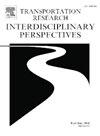从临时性到流动性的未来:作为一种主动旅行规划工具的战术城市主义的进展综述
IF 3.9
Q2 TRANSPORTATION
Transportation Research Interdisciplinary Perspectives
Pub Date : 2025-07-01
DOI:10.1016/j.trip.2025.101510
引用次数: 0
摘要
本文探讨了利用战术城市主义作为规划工具,推动城市地区向主动旅行模式转变的制度性努力的进展。本文采用一个久经考验的框架来评估街道实验的过渡能力,回顾了92个半系统选择的学术作品,其中大部分涵盖了一系列临时街道空间重新分配项目,这些项目都是为了支持向主动出行模式的转变而联系在一起的。报告证实,尽管战术城市主义现在被广泛用于开辟步行和骑自行车的空间,特别是利用2019冠状病毒病大流行带来的机会,但大多数项目在向后期成果过渡方面仍然遇到困难,普遍存在障碍:(1)资金计划和治理网络的临时性;(2)缺乏向流动性长期愿景过渡的战略远见;(3)与变革的支持者和批评者的接触不足;(4)忽视了城市交通的网络原则,而这些原则在他们的永久性同行中是被考虑的。尽管很关键,但这篇综述强调了一些案例,这些案例可以将战术城市主义作为实现长期、大规模变革的一步,同时也提出了一些弱点,希望利用战术城市主义实现这一目标的实践者可以关注这些弱点。本文章由计算机程序翻译,如有差异,请以英文原文为准。
From temporariness to mobility futures: A review of progress in tactical urbanism as an active travel planning tool
This article explores progress in institutional efforts to use tactical urbanism as planning tool for driving a modal shift towards active travel in urban areas. Using a tried and tested framework for assessing transitional capacity of street experiments, this article reviews 92 semi-systematically selected academic works, most covering a range of temporary street-space reallocation projects linked by a common purpose of supporting a shift to active travel modes. It confirms that although tactical urbanism is now widely used to carve out space for walking and cycling, particularly with the opportunity presented by the COVID-19 pandemic, most projects still encounter difficulty in transitioning towards later-stage outcomes, with common blockages appearing throughout: (1) the temporariness of funding schemes and networks of governance; (2) deficient strategic foresight into the transition towards a long-term vision for mobility; (3) inadequate engagement with both supporters and critics of change; and (4) inattention to network principles of urban mobility otherwise considered in their permanent counterparts. Though critical, the review highlights cases which viably use tactical urbanism as a step towards long-term, large-scale change, with weaknesses presented as focal points for awareness by practitioners hoping to utilise tactical urbanism for this purpose.
求助全文
通过发布文献求助,成功后即可免费获取论文全文。
去求助
来源期刊

Transportation Research Interdisciplinary Perspectives
Engineering-Automotive Engineering
CiteScore
12.90
自引率
0.00%
发文量
185
审稿时长
22 weeks
 求助内容:
求助内容: 应助结果提醒方式:
应助结果提醒方式:


